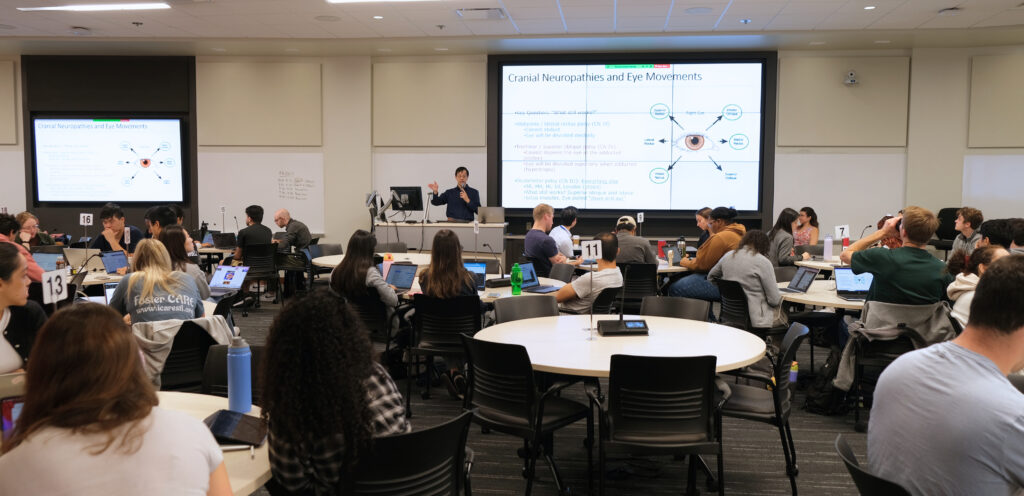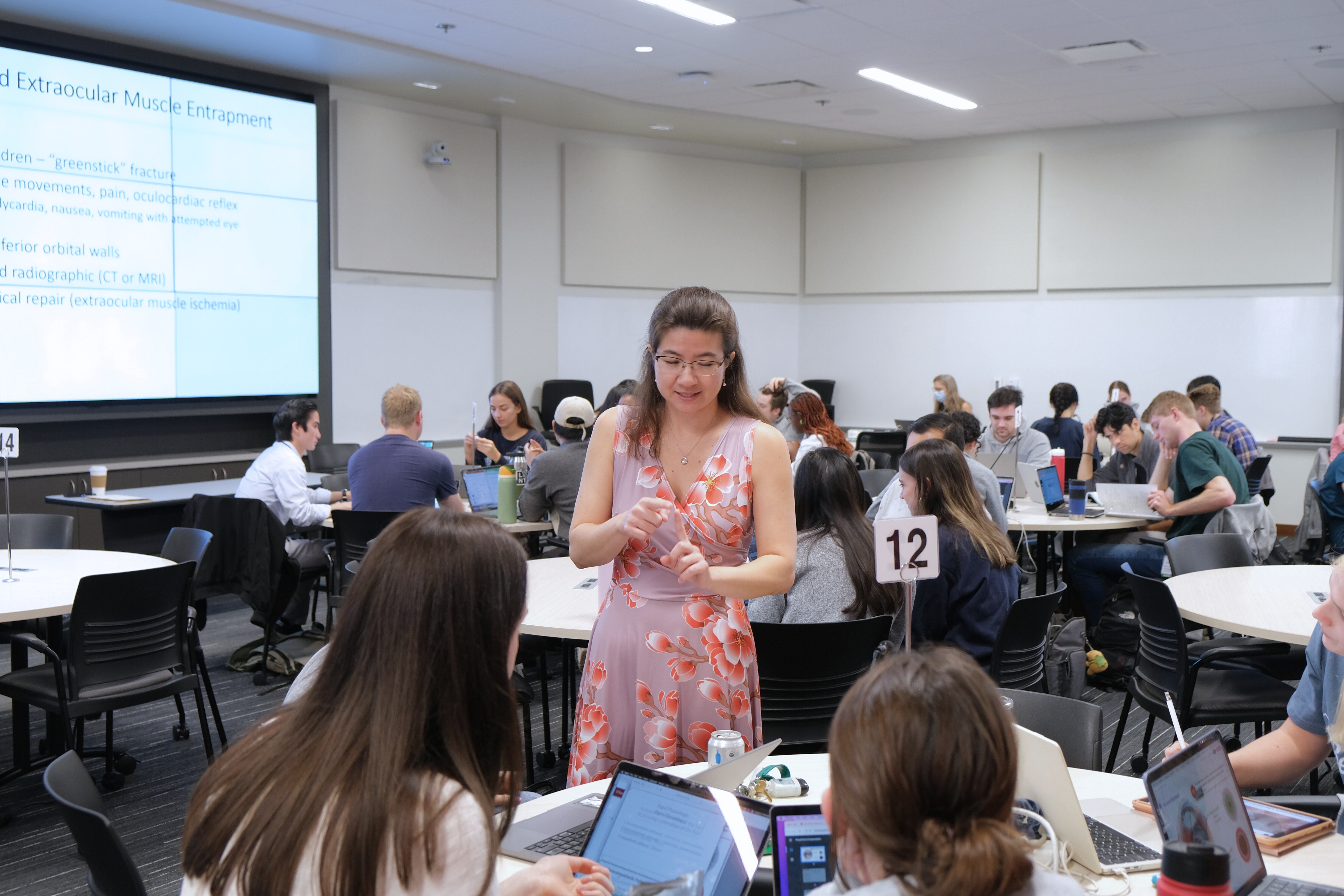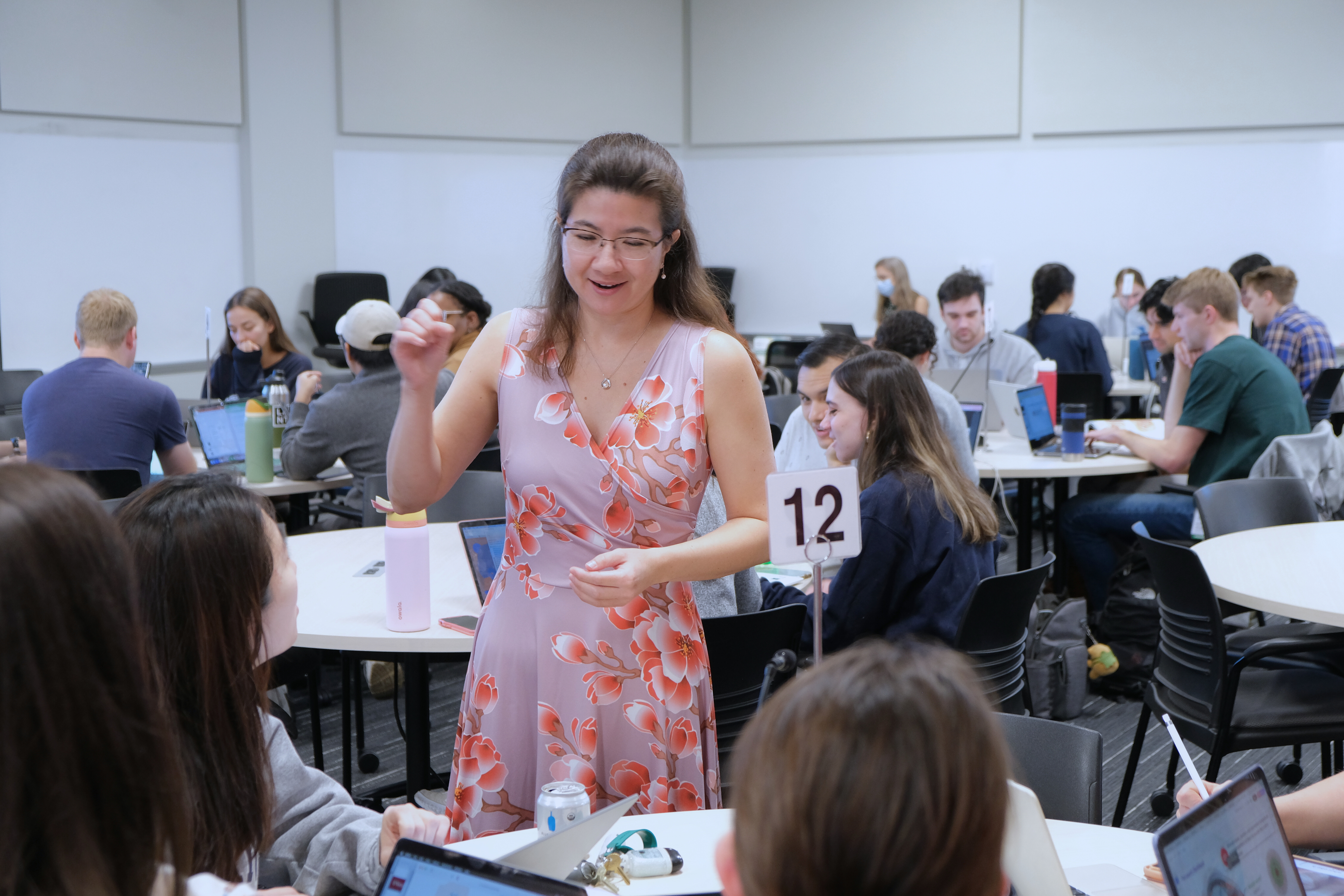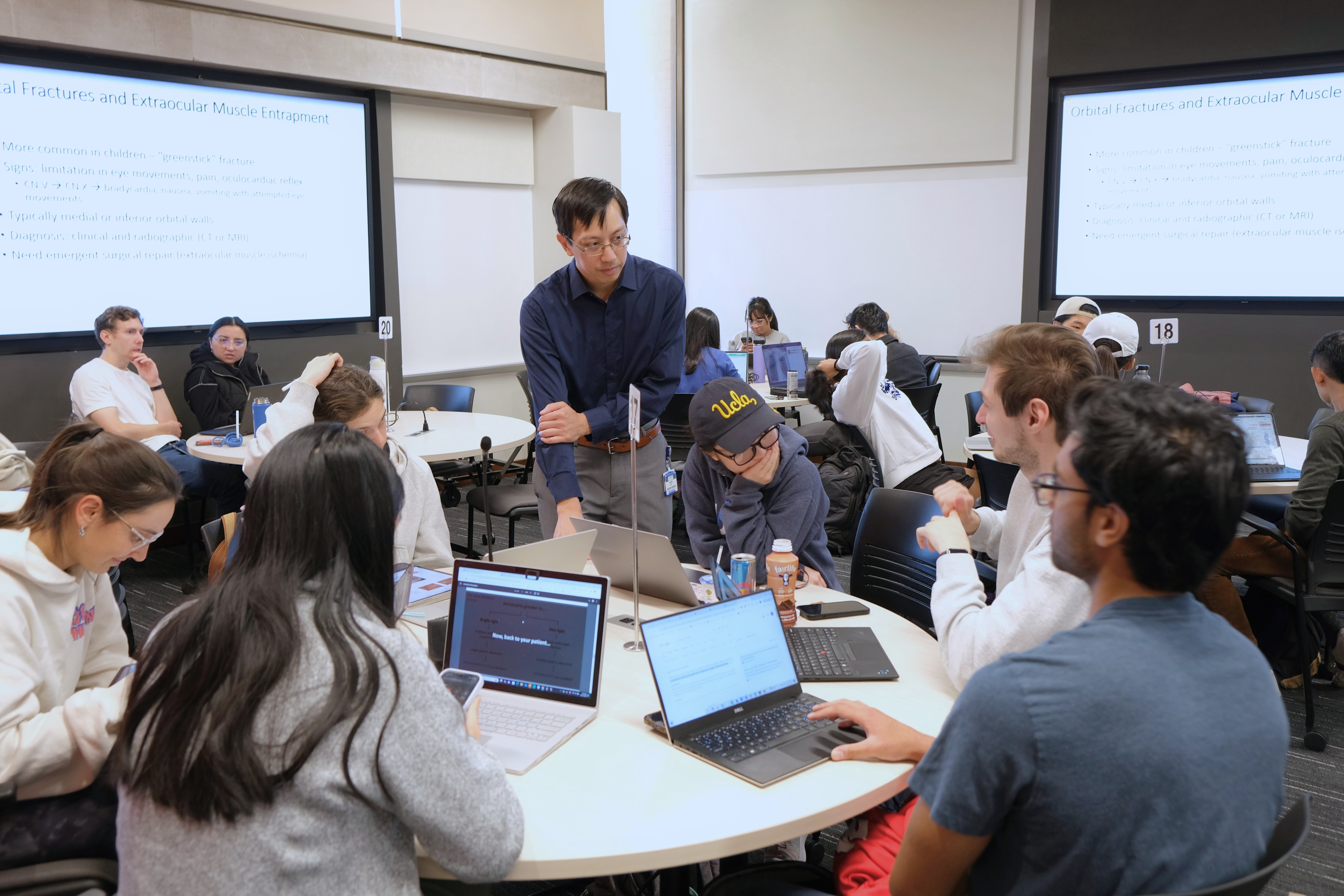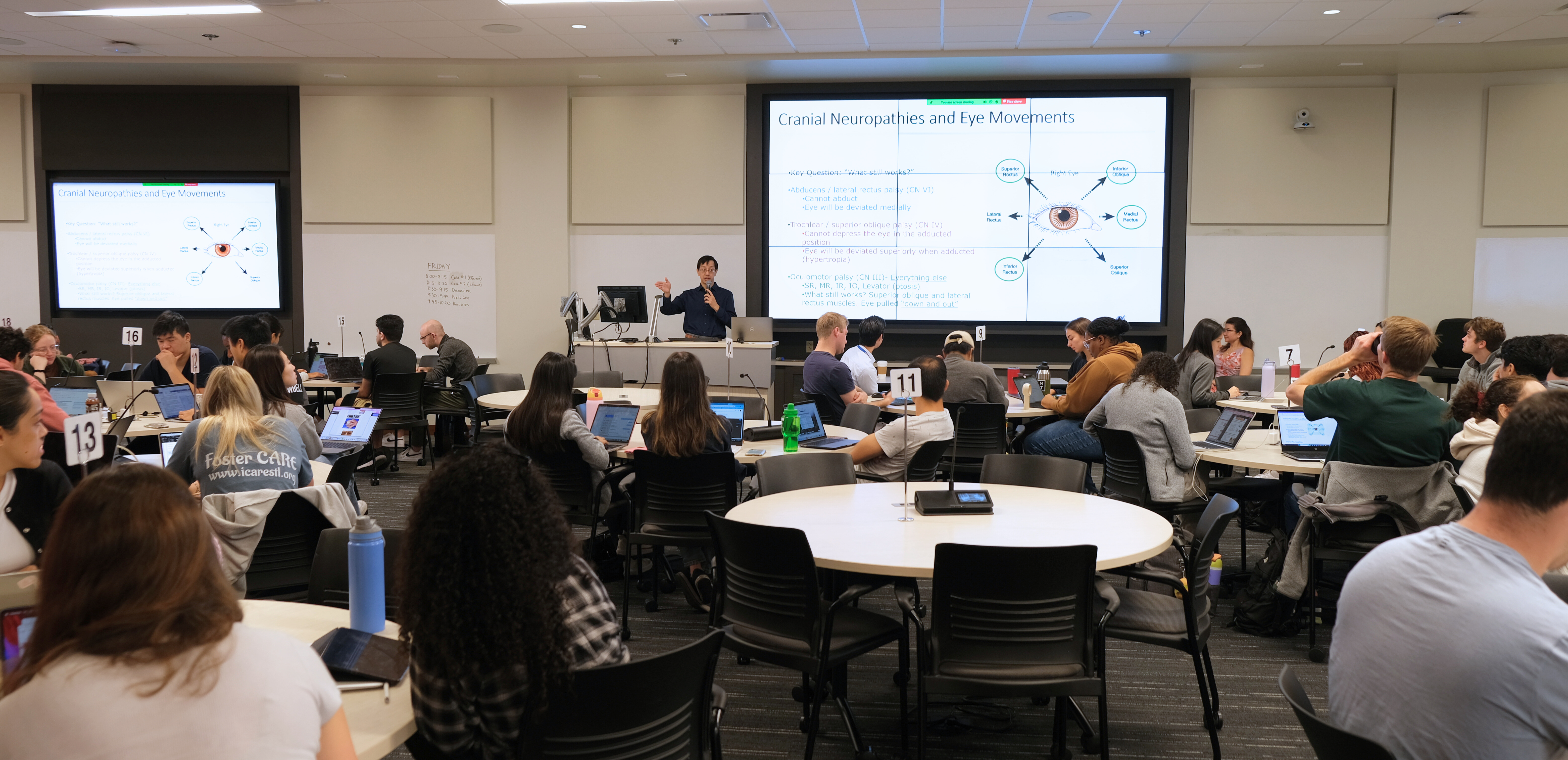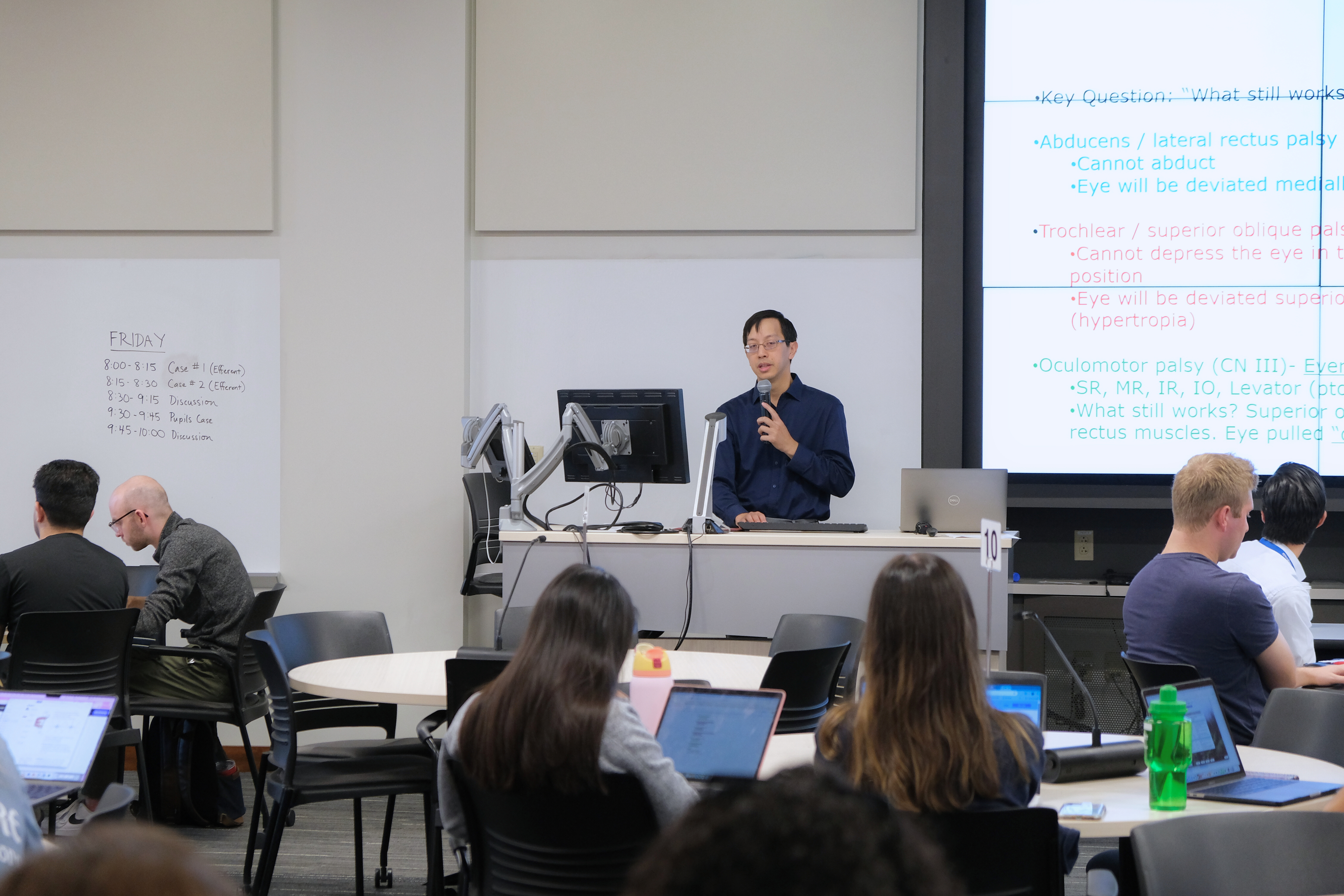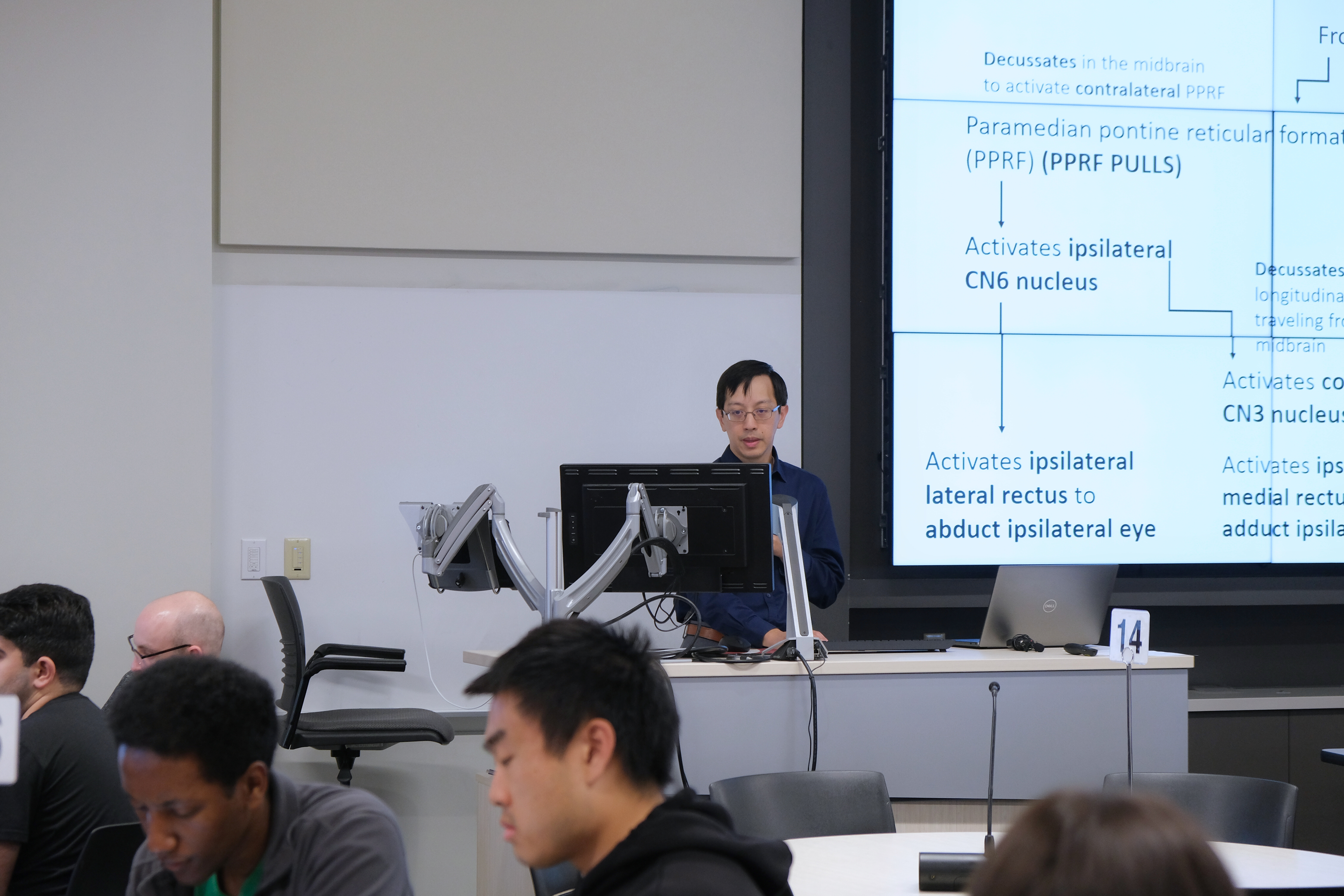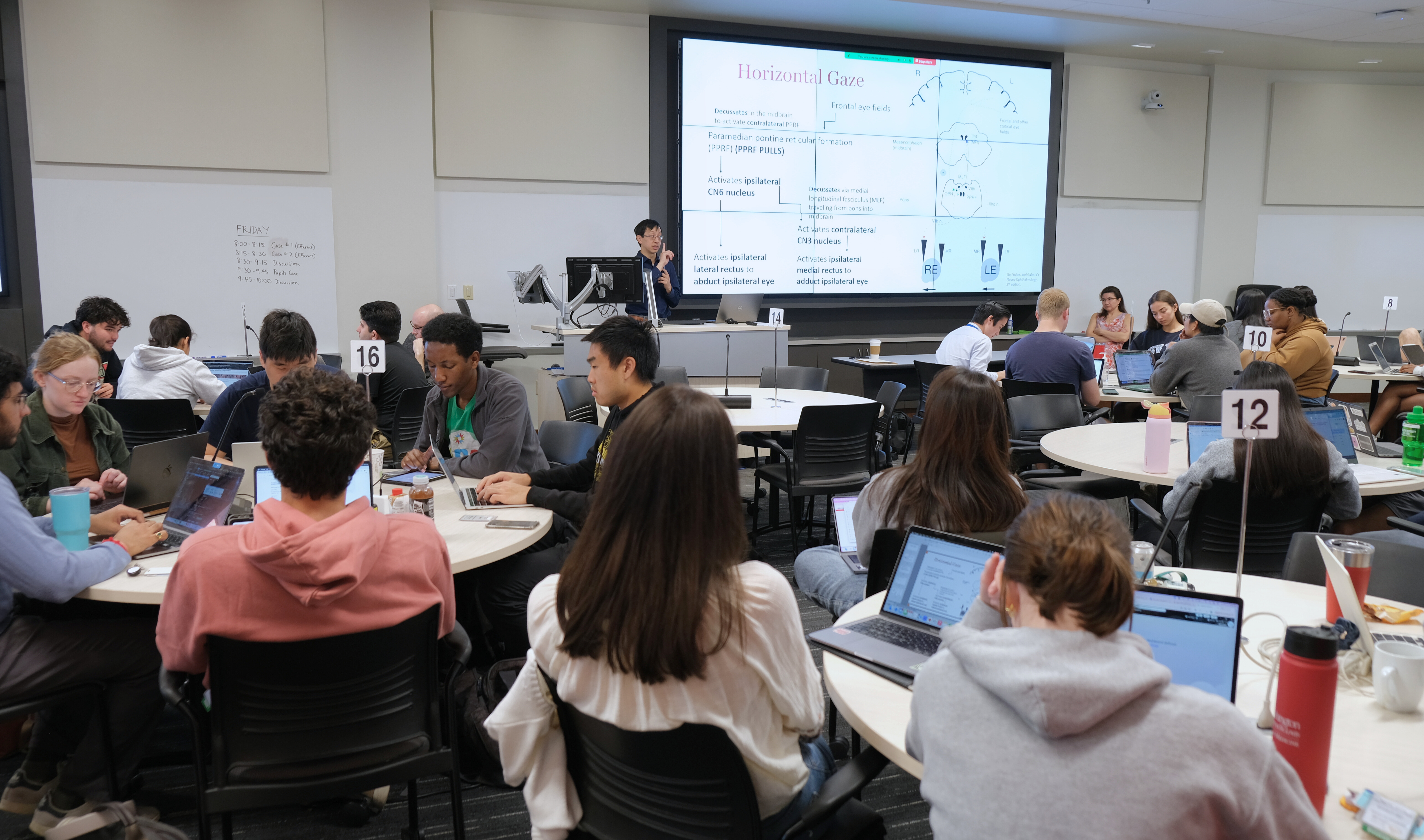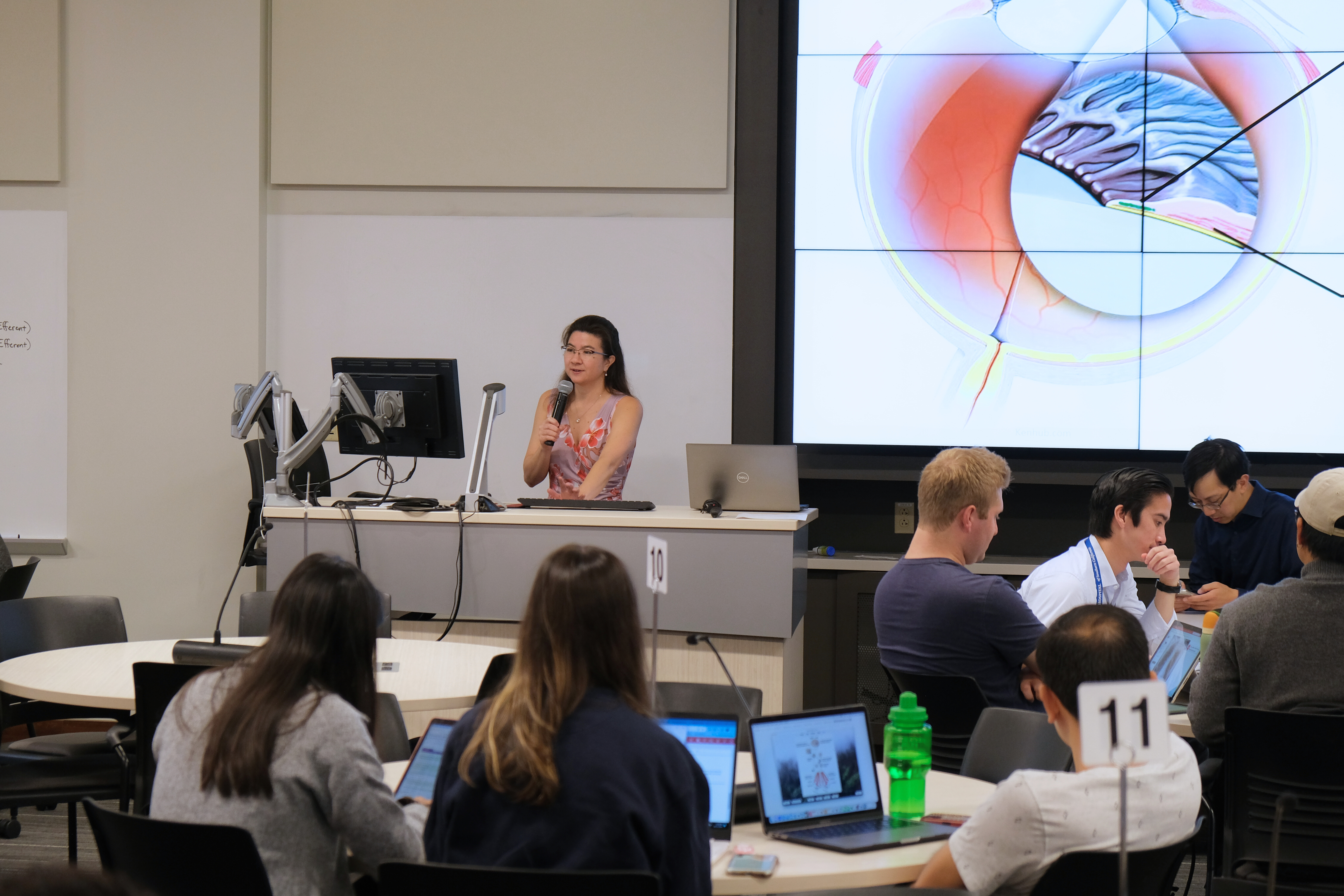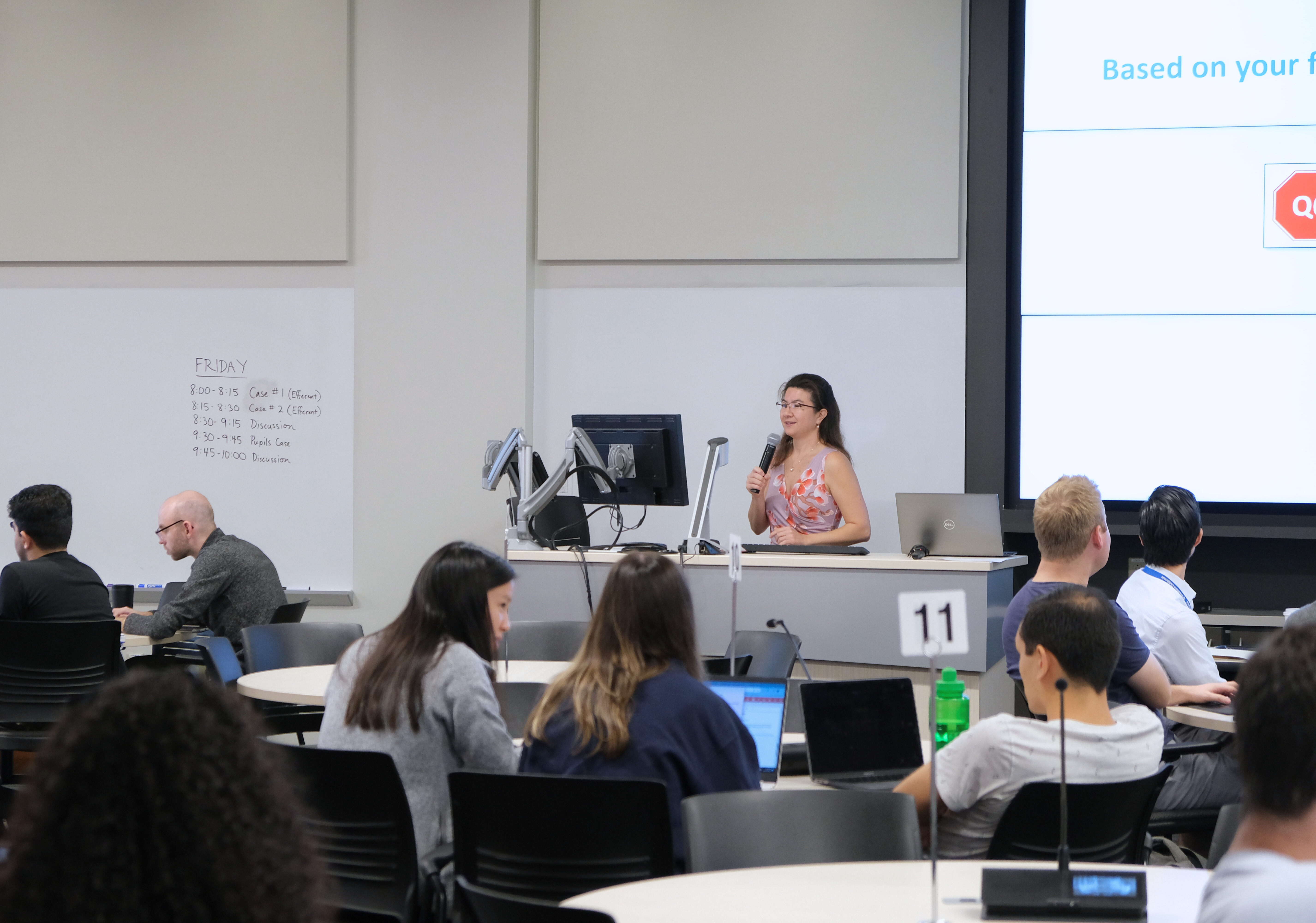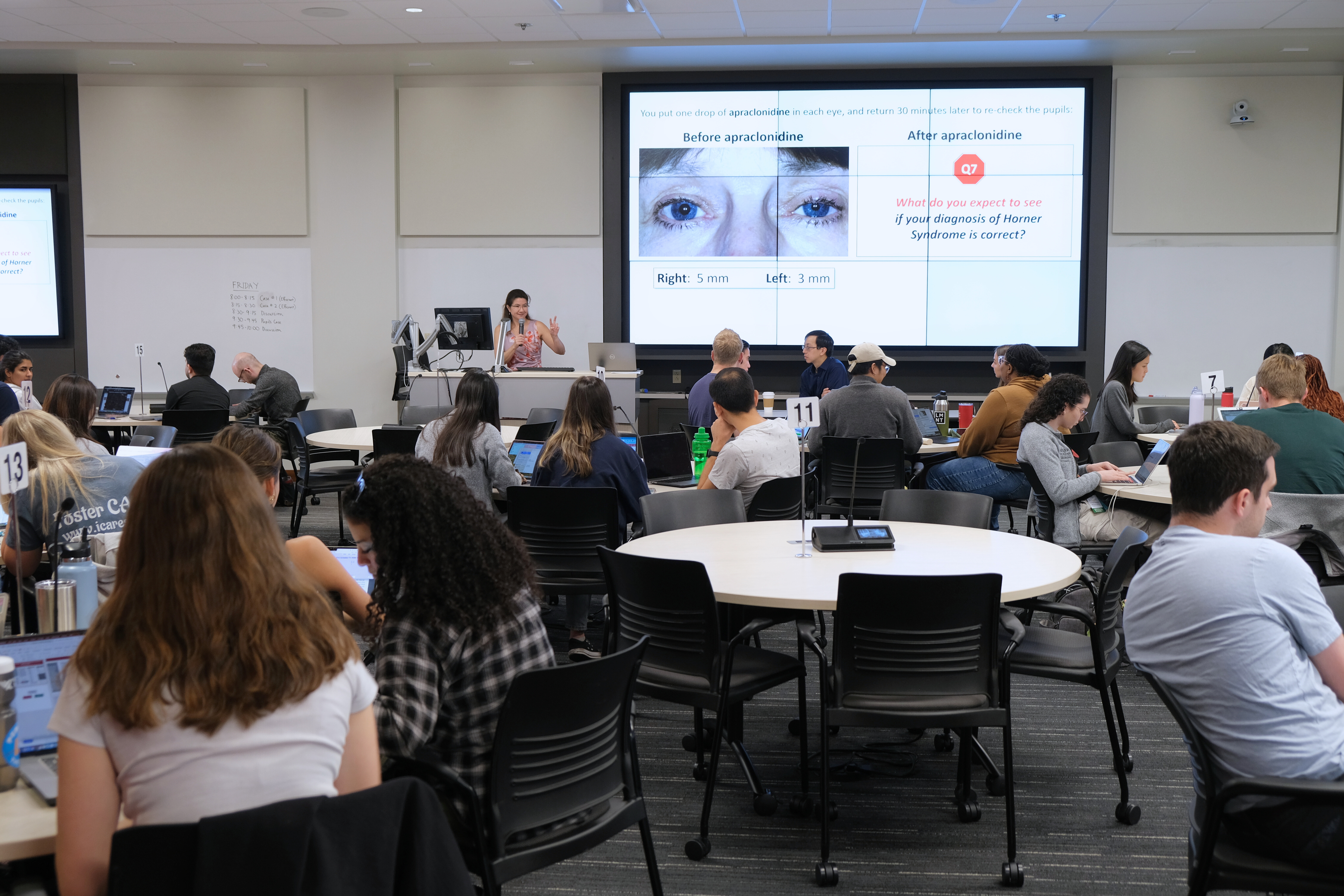In 2020, WashU Medicine introduced the Gateway Curriculum, a forward-thinking initiative designed to transform medical education. As part of this new curriculum, Dr. Andrew Lee and Dr. Cynthia Montana had the privilege of developing the ophthalmology content for second-year medical students, aiming to enhance their understanding of this critical field. Dr. Stunkel also played a key role in writing and recording one of the essential lectures.

Andrew R Lee, MD
Associate Professor, Ophthalmology and Visual Sciences; Chief, Pediatric Ophthalmology; Director, Medical Student Education for Ophthalmology
- Email: arlee@nospam.wustl.edu

Cynthia Montana, MD, PhD
Assistant Professor, Ophthalmology and Visual Sciences; Director of the University Eye Service
- Email: montanac@nospam.wustl.edu
They adopted a flipped classroom approach to maximize student engagement and deepen their learning experience. In this model, students are expected to watch pre-recorded lectures before class, allowing valuable in-class time to be devoted to hands-on learning. By using this approach, they ensure students not only absorb the theoretical knowledge but also actively apply it in practical, clinical scenarios.
Last Friday’s session focused on eye movement abnormalities and pupillary abnormalities—complex topics that are crucial to a solid foundation in ophthalmology. Through the case-based approach, students could explore these issues in-depth, discussing and analyzing them in a way that promotes long-term retention and a deeper understanding of the subject matter.
